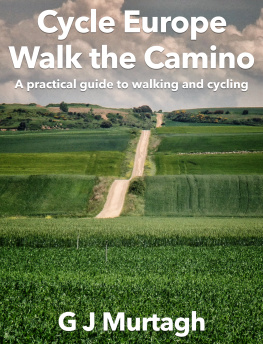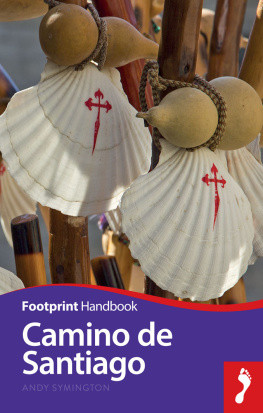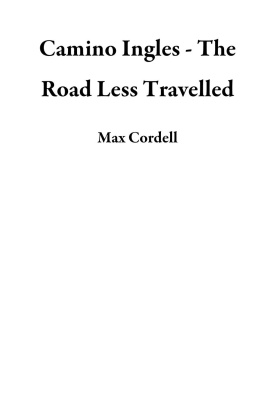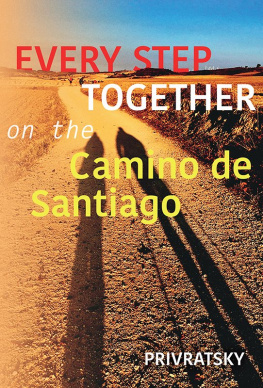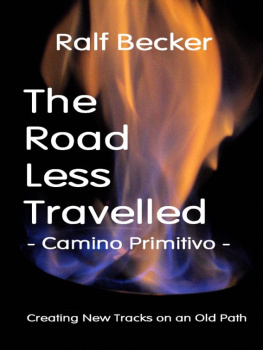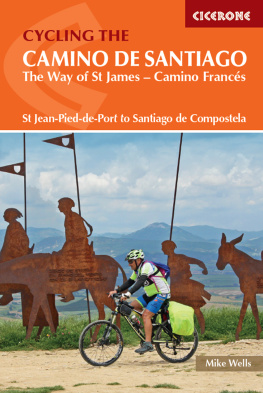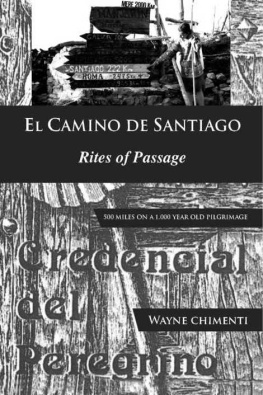
All the Good Pilgrims
All the Good Pilgrims
TALES OF THE
CAMINO DE SANTIAGO
Robert Ward

Copyright 2007 by Robert Ward
All rights reserved. No part of this work may be reproduced
or transmitted in any form or by any meansgraphic, electronic, or
mechanical, including photocopying, recording, taping, or information
storage and retrieval systemswithout the prior written permission
of the publisher, or in the case of photocopying or other reprographic
copying, a licence from the Canadian Copyright Licensing Agency.
Library and Archives Canada Cataloguing in Publication
Ward, Robert, 1962
All the good pilgrims : tales of the Camino de Santiago / Robert Ward.
ISBN 978-0-88762-252-6
1. Santiago de Compostela (Spain) 2. Christian pilgrims and pilgrimagesSpainSantiago de Compostela. I. Title.
DP285.W37 2007 914.611 C2006-906994-8
Editor: Janice Zawerbny
Cover images: istockphoto (hiker), Alamy (shell)
Maps: Lightfoot Art and Design
Published by Thomas Allen Publishers,
a division of Thomas Allen & Son Limited,
390 Steelcase Road East,
Markham, Ontario L3R IG2 Canada
www.thomasallen.ca

The publisher gratefully acknowledges the support of
The Ontario Arts Council for its publishing program.
We acknowledge the support of the Canada Council for the Arts, which last
year invested $20.1 million in writing and publishing throughout Canada.
We acknowledge the Government of Ontario through the Ontario
Media Development Corporations Ontario Book Initiative.
We acknowledge the financial support of the Government of
Canada through the Canada Book Fund for our publishing activities.
12 13 14 15 16 2 3 4 5 6
A todos los buenos peregrinos. Y a los malos tambin.
To all the good pilgrims and the bad ones as well.
A PILGRIMS INSCRIPTION IN THE
GUEST BOOK OF ESTELLA
Thank you to my editor, Janice Zawerbny, and my publisher, Patrick Crean, for their help and patience; Dennis for good advices; the Little Company of Pilgrims for moral support; the Ontario Arts Council and Toronto Arts Council for timely financial aid; Mom for being my number one fan; and Michiko for making all things possible.
Thanks to the pilgrims and the people of Spain who have given me leave to tell their stories and to those who have not.
In memoriam, brother Steve. Youre coming with me next time.
And Alan Hickey, 19302006. See you up ahead.
Contents
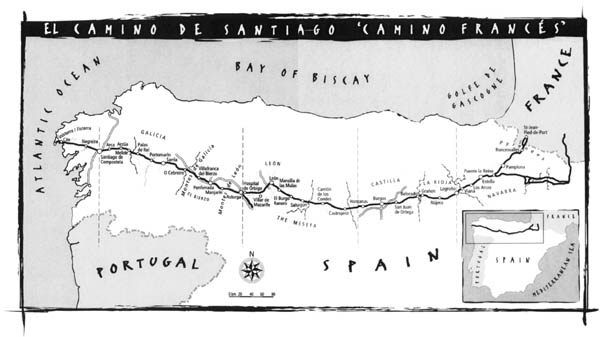
All the Good Pilgrims
Introduction

How did I ever come to be a pilgrim? For someone with my secular upbringing, its not what you would have predicted. I guess it all started with my legs. Theyve always been restless, moving, tapping, bouncing, even when I sit still. They love to climb and scramble and take me places, and once they get up some steam, they want to keep goingjust to the top of this hill, just around the next corner, just to the other side of that bridge. I like to think this is some memory-in-the-body passed down from countless generations of wandering ancestors. Who knows. I can only say that my legs always had a long walk in them.
Now, if my heart and mind had been nomads like my legs, I would never have needed the Camino de Santiago. I would simply have stepped out my front door one morning, turned left or right depending on which seemed to hold the most promise, and walked till I got tired, then picked up the next day and walked some more. But Im not a vagabond. I need some structure and rituala coffee in the morning, a bed at night, and people to keep me company in the hours between. I also like the idea of a destination, preferably one thats foreign, exotic and old.
What I wanted was a journey. An adventure on foot like the ones in bookswatching distant mountains grow closer by the day, knocking apples off the trees of autumn orchards, pausing at village wells, huddling around fires in smoky inns to swap tales with fellow travellers. Of course, the irony of these yearnings was not lost on me. For ages, we humans have done everything in our power to go faster, striving to be where we want to be without all the time and bother of getting there. And there I was, the thankless inheritor, gazing out the windows of speeding vehicles and dreaming of walking.
I suppose I could have walked if I had wanted to badly enough. It was always just a matter of calling to the driver, Excuse me, could you let me out here? (a ploy that works better on a bus than an airplane). But then the walking would have been alone, and much of it on the shoulders of highways. The old paths had been paved over, foot journeys were a thing of the pastor so I thought. But it turned out I was not the only one with restless legs and dreams of wandering. There were many more out there, and an enterprising few were already walking their dreams into life on an ancient pilgrimage road known as the Camino de Santiago.
You make the road by walking it, wrote the Spanish poet Machado, and the Camino was the road made by millions of pilgrim feet as they walked from the Pyrenees in the east of Spain to Galicia in the far west, where the remains of the Apostle James were said to lie. For more than a millennium, pilgrims journeyed to Santiago as a penance, a prayer, an act of thanksgiving, many travelling hundreds, even thousands of kilometres. Bridges, monasteries, cities and towns sprang up along their path to ease their passage; the Camino was a human landscape shaped by a journey.
Then along came the twentieth century, and with it two world wars, the Spanish Civil War, the long dictatorship of Franco and, more disruptive than any of theseat least where the Camino was concernedthe proliferation of planes, trains and automobiles. Pilgrims never stopped going to Santiago; they just stopped going on foot. By mid-century, the millennial flow of walkers had dried up, it seemed forever.
But every novelty wears thin with time. Even as European travel reached new levels of speed and comfort, people began to remember that there is more to a journey than the destination, that the getting there can mean as much as the arriving. They grew nostalgic for the old, uncomfortable ways. With Spains entry into the European Union and reopening to the world, restless feet found their way back to the Camino. The first pilgrims in the seventies were pioneers cutting the foliage back from an overgrown path. But year by year their numbers grew, so that by 1991, when I first heard of the Camino, the journey I had dreamed of, complete with food, lodging and companionship, was once again in service. And what a journey it was. Eight hundred kilometres of ancient roads, passing through grand cities and sleepy villages, mountains and vineyards, wheat fields and green, rolling hills, all culminating in a glorious destination, the holy city of Santiago de Compostela.
So did I rush off to Spain and start walking? I did not. Years passed before I took my first step on the Camino. What held me back? Partly fear that the dream which had kept fresh for so long in my imagination would spoil in the open air. But beyond that was the fact that the Camino wasnt just any long walk; it was a pilgrimage, a living expression of Christian (specifically, Catholic) faithand what right did I have to walk with the pilgrims? I was not Catholic, or Christian, or even particularly what youd call
Next page


